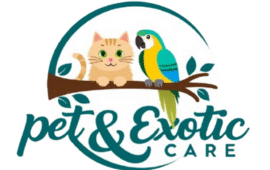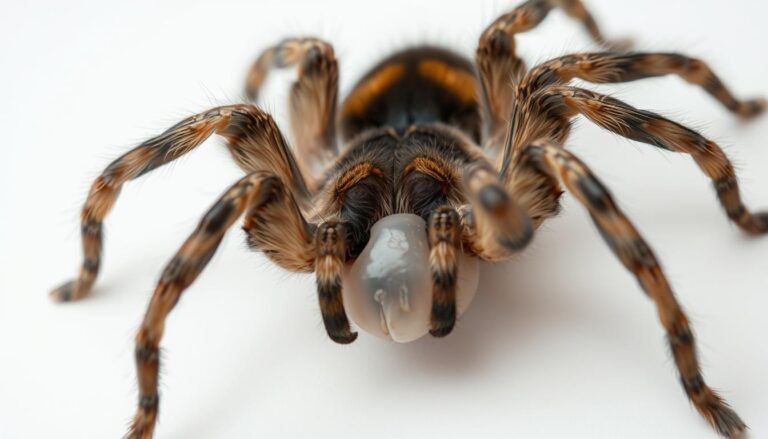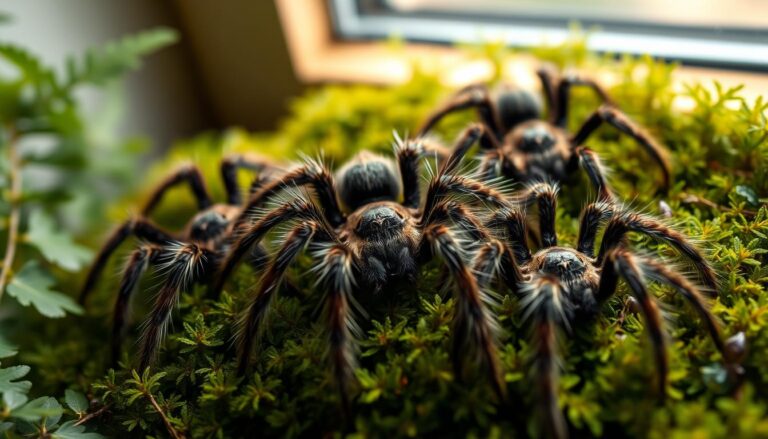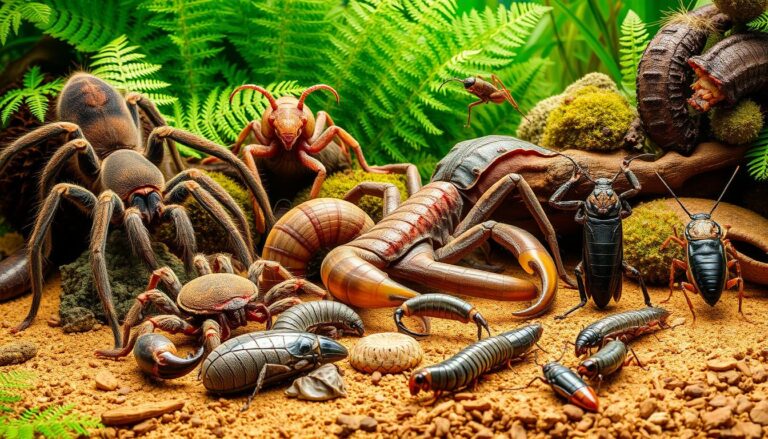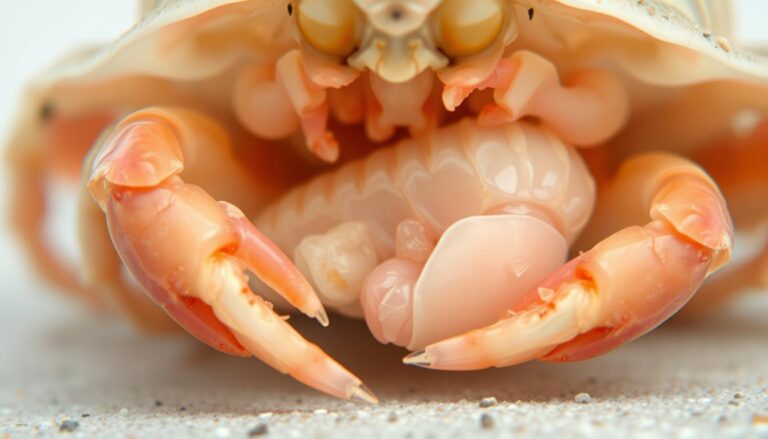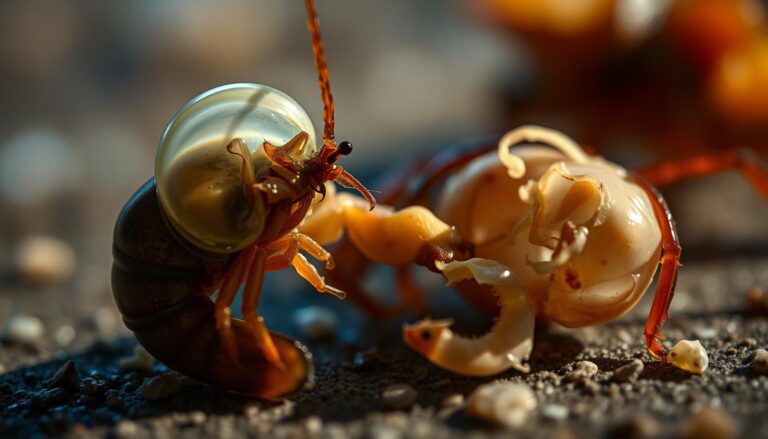Are Snails Good Pets? Pros, Cons, and Setup Tips
As we consider the unconventional, a question arises: can a sluggish, shell-carrying mollusk make a captivating companion? Snails, often viewed as garden pests, are increasingly being kept as unique pets that offer a serene and low-maintenance companionship experience. For those intrigued by the idea of having a pet that doesn’t require walking, shedding, or making…
As we consider the unconventional, a question arises: can a sluggish, shell-carrying mollusk make a captivating companion? Snails, often viewed as garden pests, are increasingly being kept as unique pets that offer a serene and low-maintenance companionship experience.
For those intrigued by the idea of having a pet that doesn’t require walking, shedding, or making noise, snails present an interesting alternative. Most commonly, the brown garden snail is kept as a pet, offering a fascinating glimpse into the world of terrestrial mollusks.
Key Takeaways
- Snails can be a low-maintenance and unique pet option.
- They require a specific habitat setup and dietary care.
- Understanding the pros and cons is crucial before deciding to keep snails as pets.
- Snails can be a great choice for those who want a pet that doesn’t demand a lot of space or interaction.
- Researching the specific needs and legal considerations of snail ownership is essential.
Understanding Snails as Pets
As pets, snails provide a fascinating opportunity to observe and learn about these creatures. They are relatively low-maintenance pets that can be quite engaging.
Common Pet Snail Species
The pet snail market encompasses several popular species, including the common garden snail (Cornu aspersum), Giant African Land Snails (Lissachatina fulica), and aquatic varieties like Ramshorn snails. Each has distinct care requirements and legal considerations.
- Garden snails are widely available and relatively simple to maintain.
- Giant African Land Snails, while impressive in size, are illegal to own in the United States.
Snail Behavior and Characteristics
Snails are nocturnal or crepuscular creatures, meaning they are most active at dusk and dawn. To encourage activity during the day, keep the room lights dim and gently mist their habitat. Snails exhibit fascinating behaviors, including unique locomotion and feeding patterns, making them engaging to observe.

The Snail Pet Pros, Cons: An Overview
For those considering a non-traditional pet, snails present an intriguing option with both advantages and disadvantages. Keeping snails can be a unique and educational experience, offering insights into the biology and behavior of these fascinating creatures.
Benefits of Keeping Snails
Snails offer several benefits as pets, making them an attractive choice for certain individuals. Some of the primary advantages include:
- Minimal space requirements, making them ideal for small living spaces
- Silent nature, ensuring they won’t disturb others
- Lack of odor, reducing potential nuisance
- Relatively low maintenance compared to traditional pets like cats or dogs
Additionally, snail ownership provides unique educational opportunities, allowing observers to witness fascinating biological processes such as feeding behaviors, shell growth, and locomotion methods not seen in vertebrate pets. For individuals with allergies to fur or dander, snails represent a hypoallergenic pet option that can satisfy the desire for animal companionship without triggering allergic reactions.
Challenges of Snail Ownership
While snails can make interesting pets, there are several challenges associated with their care. Some of the main difficulties include:
| Challenge | Description |
|---|---|
| Nocturnal Activity | Snails are most active at night, limiting daytime interaction |
| Rapid Reproduction | If conditions aren’t carefully controlled, snails can reproduce rapidly |
| Limited Emotional Connection | Compared to more interactive pets, snails may not provide the same emotional connection |
| Specific Care Requirements | Snail care requires knowledge about environmental conditions, dietary needs, and handling practices |
Some people may find the slow pace and limited interaction of snails unsatisfying compared to more responsive pets. However, for those who appreciate observational rather than interactive pet relationships, snails can still be a rewarding choice.

Setting Up a Snail Habitat
Setting up the right environment is key to successfully keeping snails as pets. A well-designed habitat ensures the health and happiness of your snails.
Tank Size and Requirements
The size of the tank or terrarium depends on the species of snail. For example, garden snails require at least a 1-gallon container, while larger species like the Giant African Land Snail need a 10-gallon aquarium. The tank should have a tight-fitting lid to prevent escape and be made of plastic or glass to ensure durability.
Substrate and Decoration Options
For substrate, you can use chemical-free potting soil, coconut coir, or sphagnum moss. These materials retain moisture and provide a natural environment for burrowing. Decorations such as small caves, branches, and safe aquarium decorations can be added to provide enrichment and hiding places.
Temperature and Humidity Needs
Snails require a specific temperature range, typically between 65-75°F (18-24°C), and high humidity levels, around 70-90%. Regular misting with clean water is necessary to maintain the humidity and keep your snails moist.
| Snail Species | Tank Size | Temperature Range | Humidity Level |
|---|---|---|---|
| Garden Snail | 1-gallon | 65-75°F (18-24°C) | 70-80% |
| Giant African Land Snail | 10-gallon | 65-75°F (18-24°C) | 80-90% |
Feeding Your Pet Snail
A well-nourished snail is a happy snail, and providing the right food is essential for its overall health and shell development. Snails are herbivores, meaning they eat plant materials, and their diet should reflect this.
To keep your pet snail healthy, you can feed it a variety of fresh vegetables and fruits. Leafy greens like dandelion greens, lettuce, and kale are excellent choices. You can also offer bits of cucumber, broccoli, and carrots. Fruits like strawberries and apples are a nice treat, but they should be given in moderation.
Recommended Diet for Different Snail Species
Different snail species have varying dietary needs. Garden snails, for example, thrive on a diet of common vegetables, while aquatic species like Ramshorn snails benefit from specialized algae wafers and aquarium plant matter. Researching the specific dietary needs of your snail species is crucial to providing the best possible care.
- Fresh vegetables should make up the bulk of your snail’s diet.
- Fruits can be given as an occasional treat.
- Aquatic snails may require algae wafers or other specialized foods.
Calcium Requirements for Shell Health
Calcium is crucial for maintaining a healthy shell. You can provide calcium by placing a small cuttlebone in the terrarium or by sprinkling finely ground eggshells onto your snail’s food. This will help ensure that your snail’s shell remains strong and healthy.
“A snail’s shell is its best defense, and a diet rich in calcium is essential for maintaining its integrity.”
Feeding your snail once a day is recommended, but be sure to remove any uneaten food the next day to prevent spoilage. A balanced diet, combined with proper feeding schedules, will help keep your pet snail healthy and thriving.
Handling and Interacting with Snails
To enjoy your pet snail, it’s essential to understand how to handle it properly. Snails are generally safe to handle, but there are a few things you should do to ensure their safety and well-being.
Before picking up your snail, wash your hands thoroughly with soap and water to remove any potentially harmful lotions, oils, or natural elements that a snail may absorb through its skin. Then, with slightly wet hands, you can gently scoop up your snail underneath its foot to break the suction. It’s crucial to handle snails with care, as they can be injured easily if dropped.
Safe Handling Practices
Proper snail handling involves a few key practices. Firstly, always handle snails over a soft surface to prevent injury from accidental falls. Secondly, never pick up a snail by its shell, as this can damage the muscle that attaches the body to the shell, potentially leading to serious harm or even death. Instead, use the gentle scooping method described earlier.
- Gently scoop beneath the snail’s foot with slightly moistened fingers.
- Avoid handling snails by their shells to prevent damaging the mantle.
- Keep interaction sessions brief (5-10 minutes) to prevent stressing the snail.
Health and Safety Considerations
When handling snails, it’s also important to consider health and safety. Wash your hands thoroughly after handling snails to prevent the potential transmission of bacteria or parasites. This is particularly important when children are involved in handling snails. Additionally, be aware that wild-caught snails may pose greater health risks than captive-bred specimens, as they may carry parasites like rat lungworm.
By following these guidelines, you can enjoy interacting with your pet snail while ensuring its health and safety. Recognizing stress signals in snails, such as retraction into their shells or excessive mucus production, can also help you determine when to stop handling them.
Legal Considerations for Snail Ownership
The legality of keeping snails as pets varies significantly, with certain species facing strict regulations due to their potential impact on local ecosystems. Giant African Land Snails, for instance, are a focal point of these regulations.
Regulations on Giant African Land Snails
Giant African Land Snails are not your typical pets, especially in the U.S., due to their potential to cause serious harm to the ecosystem. They are considered a destructive and invasive species in the U.S., and as such, there are laws involving these large snails. The Department of Agriculture’s Animal and Plant Health Inspection Service states that this species of snail can destroy over 500 different species of plants, cause damage to plastic and stucco structures, and may carry parasites that can cause meningitis in humans.
Key points to consider include: – Giant African Land Snails are strictly prohibited as pets in the United States. – The U.S. Department of Agriculture enforces regulations against their ownership. – Historical invasions in Florida and Hawaii resulted in significant agricultural damage. – They pose public health concerns as potential vectors for rat lungworm parasites.
Responsible Ownership and Invasive Species Concerns
While Giant African Land Snails are not legal to own in the U.S., there are legal alternatives such as native or established non-invasive species like garden snails. Responsible ownership practices include never releasing captive snails into the wild, as even common varieties can disrupt local ecosystems. Prospective snail owners should research local regulations before acquisition, as some states and municipalities have specific ordinances regarding invertebrate pets.
By understanding and adhering to these regulations, snail enthusiasts can enjoy their hobby while minimizing their impact on the environment.
Snail Health and Lifespan
Understanding the health and lifespan of snails is crucial for providing optimal care. Snails, as pets, have specific needs that must be met to ensure they live a healthy and long life. Their health is influenced by factors such as diet, environment, and handling practices.
Common Health Issues
Pet snails can experience a range of health issues. Common problems include shell damage, parasitic infections, bacterial infections, and calcium deficiencies. Shell damage can occur due to improper handling or inadequate calcium intake, leading to cracks or thinning of the shell. Parasitic mites can infest snails, appearing as tiny moving specks on their bodies or shells, and require immediate isolation and habitat cleaning to prevent spread.
- Shell problems often indicate underlying care issues, such as inadequate calcium or improper humidity levels.
- Calcium deficiency can lead to shell malformation and other health issues.
- Regular health monitoring involves checking for consistent activity levels, normal feeding behaviors, and proper shell growth.
Expected Lifespan of Pet Snails
The lifespan of pet snails varies significantly by species. Garden snails typically live 2-5 years in captivity, while Giant African Land Snails can survive 5-10 years with optimal care. Environmental factors, such as temperature, humidity, diet, and stress reduction, dramatically influence snail longevity. Ensuring the right environment and proper care can extend a snail’s life expectancy.
Age determination in wild-caught specimens can be challenging due to the unreliability of shell growth rings as age indicators. Thus, understanding the specific needs and health indicators of your snail is crucial for maximizing its lifespan.
Conclusion: Is a Snail the Right Pet for You?
As we conclude our exploration of snails as pets, it’s essential to consider whether these unique creatures are the right fit for you. Snails can be ideal pets for individuals seeking low-maintenance companions that require minimal daily care.
They are particularly suitable for busy individuals or those with limited capacity for demanding pet care routines. Snail ownership also presents an educational opportunity for children, though parental supervision is essential.
To determine if a snail is the right pet for you, consider your expectations regarding pet interaction, your willingness to learn about specialized care requirements, and your long-term commitment to these creatures. With proper understanding and care, snails can thrive and provide a unique pet experience.
